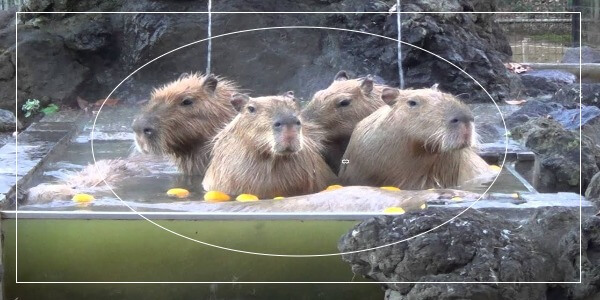One of the special abilities of capybaras is to hold their breath underwater for minutes. Capybaras are semi-aquatic water; they can be found in swamps, marshes, dense forests, and near rivers, lakes, and other water bodies, where they can feed on aquatic plants.
When threatened or at risk of being attacked, a capybara will dive into the water and conceal itself from a predator for up to five minutes or even longer, in some cases.
Capybaras are intelligent mammals; their sensory organs help them understand when they are in danger or at risk of being attacked. Capybaras are vocal and have mediums of communication. They communicate with one another through whistles, chirps, barks, and purrs.
These rodents will submerge themselves underwater, holding their breath for up to 5 minutes. Another capybara fact is that they can take a nap in the water with their noses slightly above the water or at the edge of the banks.
While submerged in water, the capybara’s breathing rate reduces. In this article, we will see the breath-holding capacity of the capybara alongside other special facts.
What Are Capybaras?
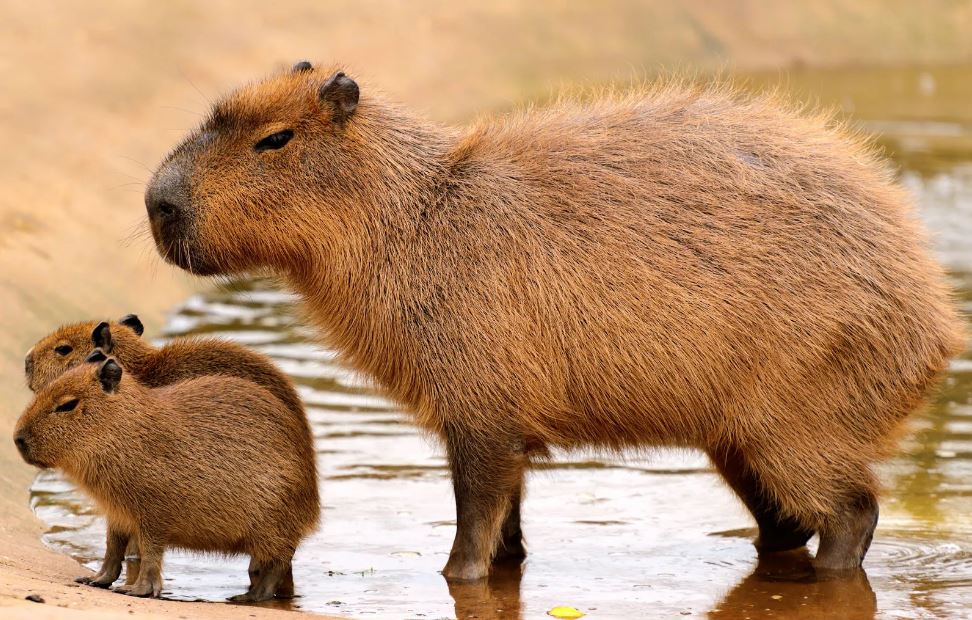
Capybaras are wonderful animals hailed as the world’s largest rodents, with the biggest ones weighing over 140 pounds. They come from South America and live around seasonal floodplains, rivers, marshes, mangroves, swamps, and forests with proximity to water bodies to keep their skin warm.
Capybaras are docile and friendly, making them unusual animals to keep as pets. They do not attack humans, they are affectionate and enjoy human company.
They are social animals and can be found living in large groups made of up over 30 or more members. A capybara can live up to 12 years in captivity if it is cared for and its dietary needs are provided. On average, a capybara can live up to 8 years in the wild.
Most of the time, capybaras do not live up to 6 years in the wild as they are attacked by various predators. However, they tend to live happily and peacefully when adopted in human homes.
Many people keep pet capybaras in their apartments as the rodent doesn’t require a large space or garden to live. The capybaras have a great sense of hearing and eyesight, which is sharp during the day and night.
One of the special features and unique abilities of the capybara is its semi-aquatic nature. The capybaras can thrive in water and on land. They are excellent runners, climbers, and swimmers. The capybara enjoys staying in a pool of water. They are found in large numbers in forests with water bodies and aquatic plants.
Can Capybaras Hold Their Breath?
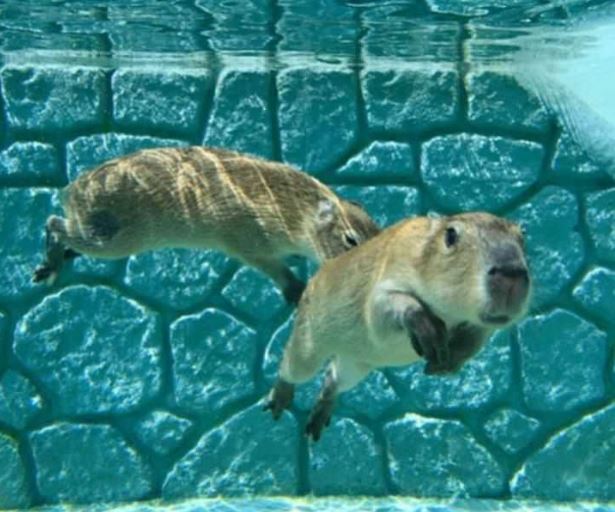
As mentioned, the breath-holding ability of capybaras is one of their strengths. The capybaras can stay submerged underwater and hold their breath for up to five minutes. Another fantastic ability of these rodents among mammals is they can reduce their heart rate to conserve energy whilst underwater.
The capybara has a set of lungs divided on each side of its rib cage. The upper lung performs the normal functions in the respiratory system but the lower lung collects air and stores it for future use.
This unique respiratory system allows them to fill their lungs with a sufficient amount of oxygen and hold their breath for significant amounts of time underwater. Additionally, the capybara has an adequate amount of hemoglobin in its bloodstream, enabling it to circulate more oxygen throughout the body while they are underwater.
This allows the rodents to stay submerged for longer periods without having to come up to grasp some air. Another benefit of their breath-holding skill is that it gives them an edge over powerful predators.
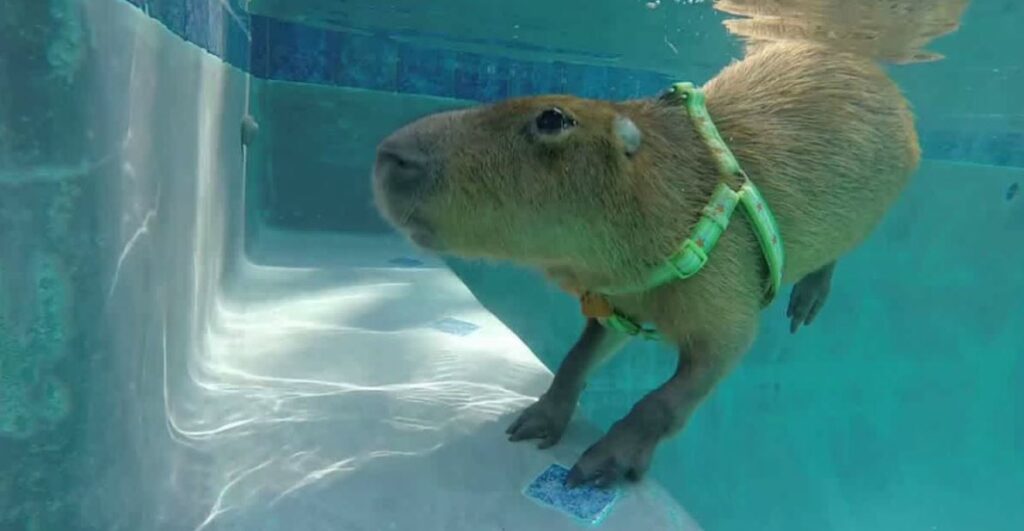
The capybara is a target for animals such as ocelots, leopards, anacondas, jaguars, and others, and the best way to evade predators is to hide underwater. Their capybara’s breath-holding skill has helped them escape attacks from predators and allowed them to survive in the wild.
Spectacularly, capybaras are not the only animals with breath-holding capability. Several mammals can stay underwater for lengthy periods. Emperor penguins can spend more time underwater than the capybara. These birds can stay submerged for over 20 minutes at a time.
Beavers have been discovered to stay submerged for over 15 minutes. In the same vein, animals such as sea cows and walruses stay underwater for up to 30 minutes. The ability of these animals to adapt to their present environment has made them develop unique skills and abilities that helped them survive.
How Has The Capybara Benefited From Its Breath-Holding Ability?
The Capybaras has benefited from its breath-holding ability in several ways. Staying submerged for lengthy periods allows the capybara to source food (water plants) and build friendly relationships with other capybaras and even aquatic animals.
Staying in water allows the capybaras to interact and bond with each other. Most importantly, it keeps them away from the radar of predators on the prowl, who are eager to feast on them.
While the capybara has a set of long, sharp teeth, which can be used for defense, it would be unwise for the rodent to go head-to-head against skillful hunters like puma, leopards, and ocelots. However, staying in water will make them undetected by the predator.
The capybara’s breath-holding skill has helped it evade fierce predators, navigate difficult environmental challenges, and survive in the wild.
Do Capybaras Sleep Underwater?
As mentioned, capybaras can sleep submerged. They have mastered the art of holding their breath, which has helped them stay underwater for up to five minutes without running out of air.
Over time, these large rodents have gotten acquainted with their environment and have used their breath-holding skill to avoid predators or to chill underwater.
A capybara can sleep underwater. To do this, it needs to keep its nose above the water. Doing this will allow it to get air to breathe. They can also submerge themselves underwater to rest, play, socialize, and associate with one another. It is normal for capybara to have a nap in the water.
Frequently Asked Questions
Can Capybaras Hold Their Breath?
Capybara have the excellent ability to hold their breath for longer periods. They typically do this underwater when they are hiding from predators or sourcing plants and food to eat.
Capybaras can hold their breath for a significant amount of time because their respiratory system allows them to save a large volume of oxygen in their bloodstream, decreasing their metabolic rate and heart rate.
Moreover, the high amount of hemoglobin in their bloodstream lets them more oxygen, which will be used while submerged.
Can Capybara Sleep In Water?
These rodents are known to chill and take naps in water. As mentioned, the capybara can stay underwater for over 5 minutes. They do this by closing their ears and nostrils and getting submerged, holding their breath.
While underwater, they still have access to conserved oxygen, which will be utilized while they are underwater. Sometimes, they can keep their entire bodies in the water, with their nostrils above the water’s surface.
What Other Animal Can Hold Its Breath For Long?
While capybaras can manage to hold their breath for 5 minutes, beavers on the other hand can hold their breath for over 15 minutes. Like the capybara, the beaver closes their nostrils, ears, and eyes when they want to stay submerged for extended periods.
Beavers can also stay underwater to source food or build a dam. When they have stayed in the water for too long, their sixth sense signals to them when it is time to get above the water’s surface to get fresh air.
Similarly, beavers and walruses can hold their breath and stay submerged for up to 30 minutes.



![Why Do Capybaras Not Have Tails? - [Answered] Why Do Capybaras Not Have Tails](https://capybaratips.com/wp-content/uploads/2023/03/Capy-Tail-250x200.webp)
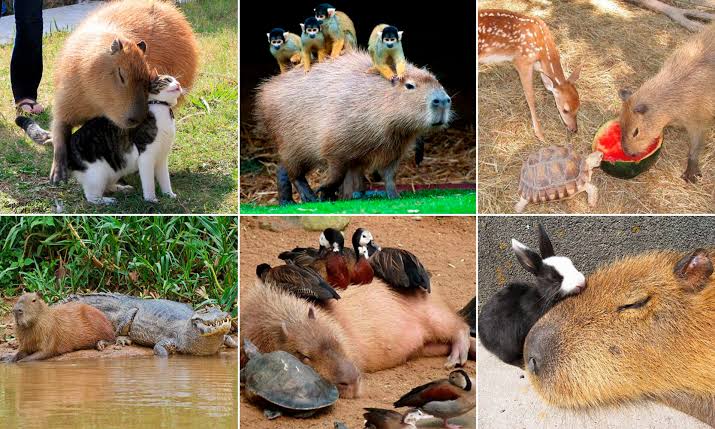
![How Long Do Capybaras Live? - [Answered] How Long Do Capybaras Live](https://capybaratips.com/wp-content/uploads/2023/03/Capybara-Pix-250x200.webp)


